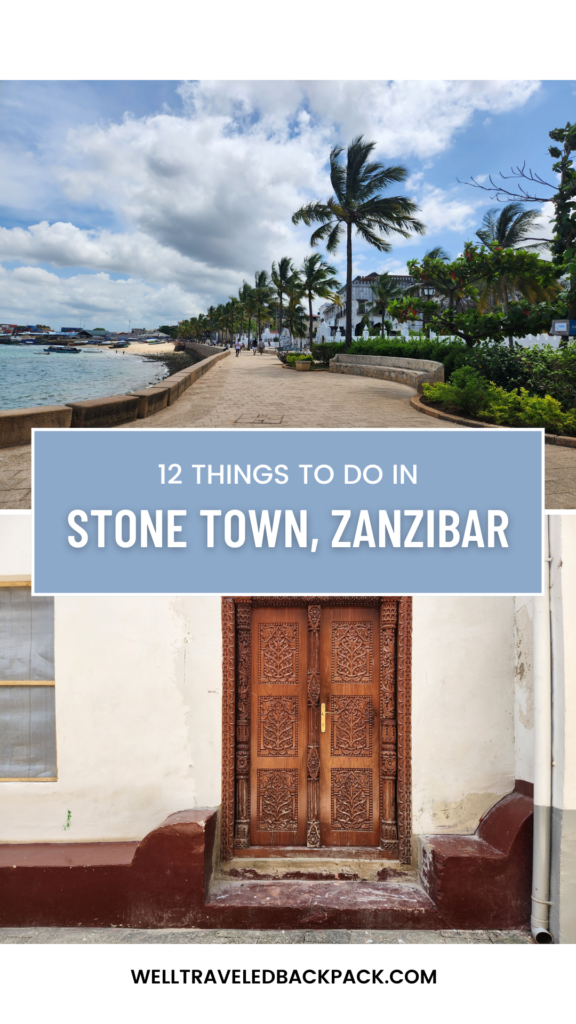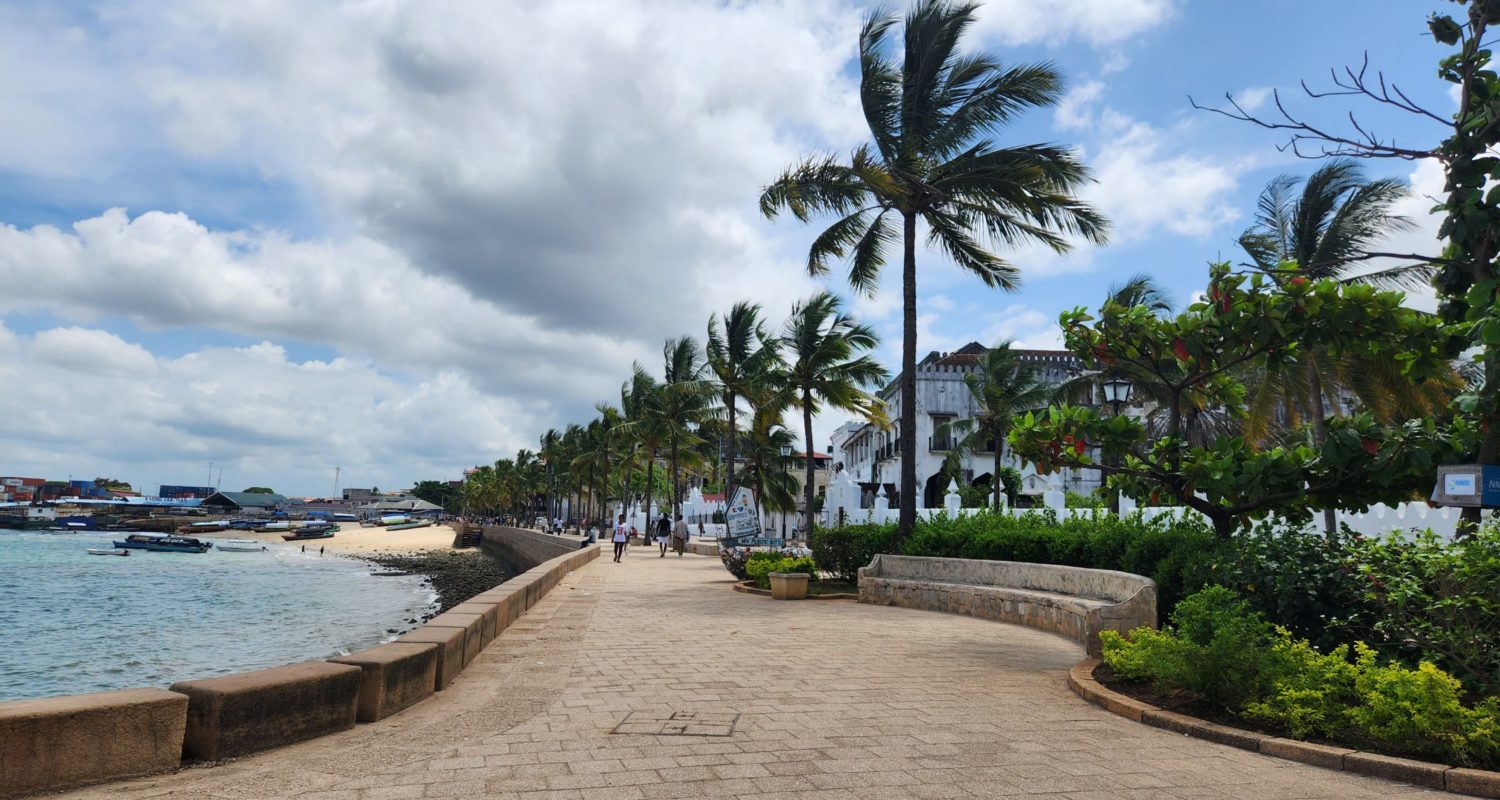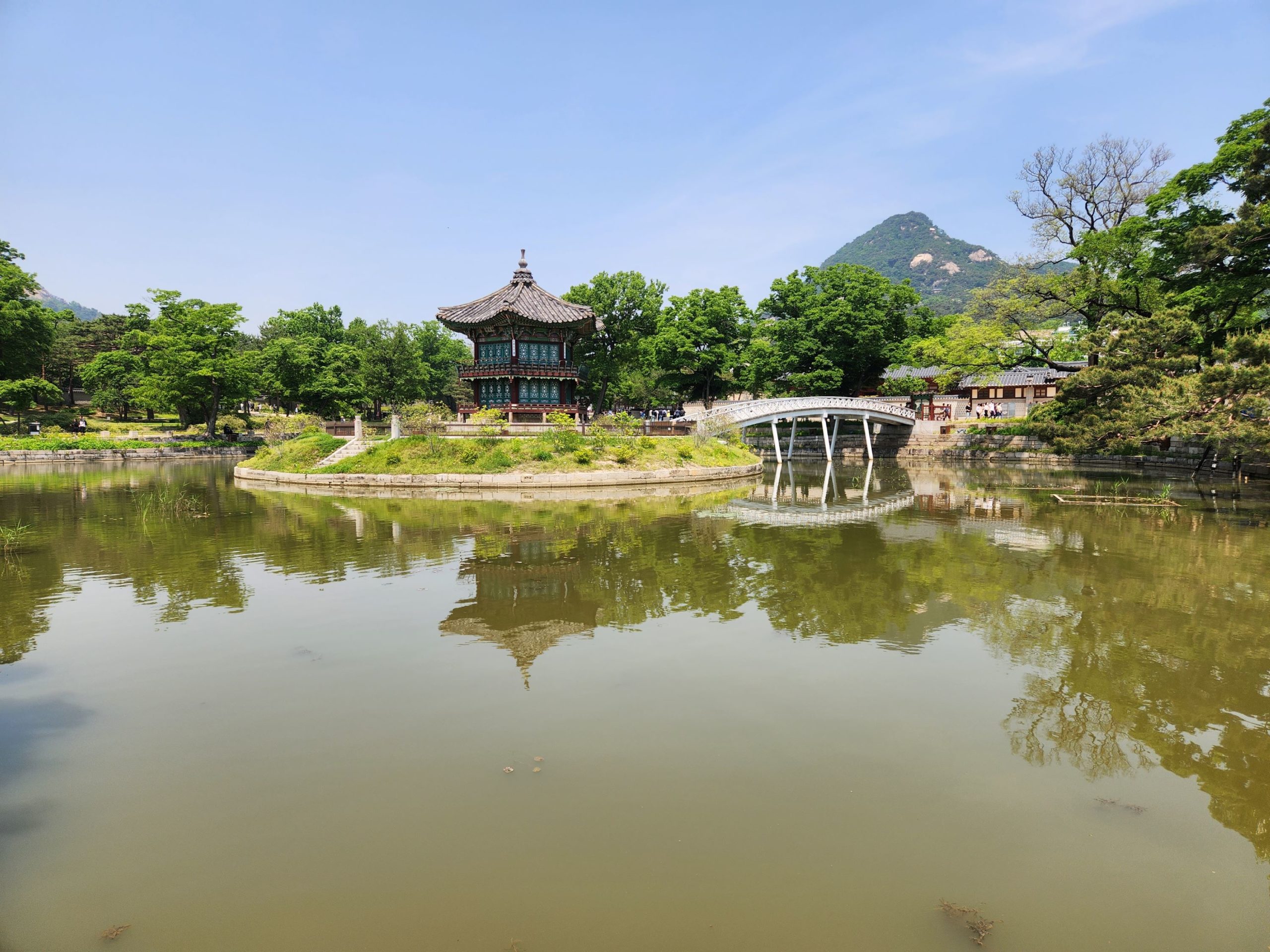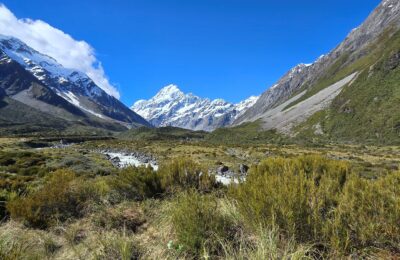Zanzibar is an island off the coast of Tanzania in the Indian Ocean. It’s been gaining popularity recently due in large part to its stunning coastlines of white sand beaches and clear blue waters. In addition to incredible beaches, Zanzibar also has an interesting, rich culture.
Throughout its history, Zanzibar has been under various countries’ rule – British, Portuguese, Omani. It was a hub of the East African slave trade, which contributed to it having a mix of Swahili, European, the Middle Eastern and Indian cultures. You can see this blend in its architecture, food and cultural norms.
The best place in Zanzibar to immerse yourself in this cultural melting pot is Stone Town, Zanzibar’s capital. Wandering through the town’s narrow alleyways, you can’t help but notice all the details that make Zanzibar feel culturally unique.
I spent about two days in Stone Town, following three days on the beaches in Jambiani. That felt like enough time to see its highlights. However, you won’t run out of things to do in Stone Town if you spend more days there, especially if you want to take day trips.
If you’re visiting Zanzibar, Stone Town is an absolute must. Here are recommendations for 12 things to do in Stone Town over two days.
Tour the East African Slave Trade Museum and Church
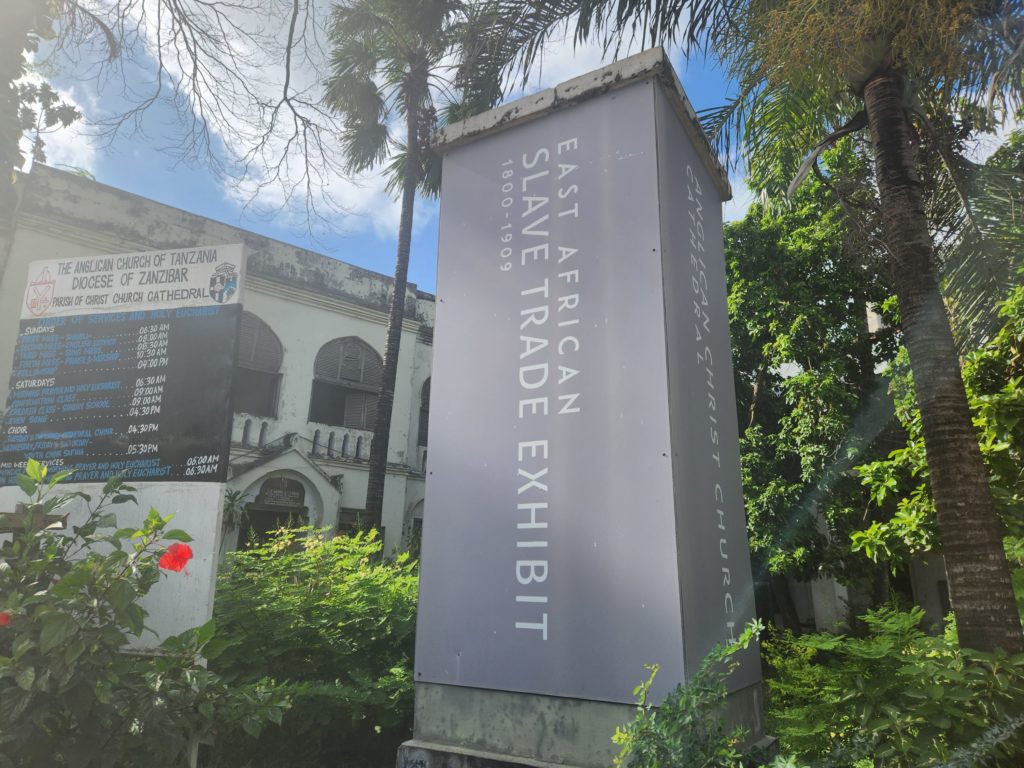
Stone Town was a hub of the East African slave trade, and that history is embedded in its culture today. There is a museum where the previous slave market was located dedicated to the history of slavery in Zanzibar. Touring this museum is sobering, but it is a major part of Zanzibar’s history.
Arriving at the museum, someone will greet you for an entrance fee, and you’ll get a tour guide. The guide is technically free, but you can tip them at the end of the tour.
Our guide took us through the quarters where enslaved people were kept between being shuttled to Zanzibar and being sold at the market. He explained the horrendous living conditions that came from the hundreds of enslaved people being forced to be chained in place in two small, cramped rooms with poor ventilation. That little room with just three people was sweltering in the oppressive summer heat. I couldn’t imagine what it felt like being stuck in there day and night pressed against so many bodies.
As we made our way from the quarters to the auction block and the church, our guide gave us a history of the slave trade in Zanzibar and how it eventually came to an end. They still honor the British man who helped end slavery on the grounds of the old slave market. He has a memorial in the beautiful Anglican church to thank him for his efforts.
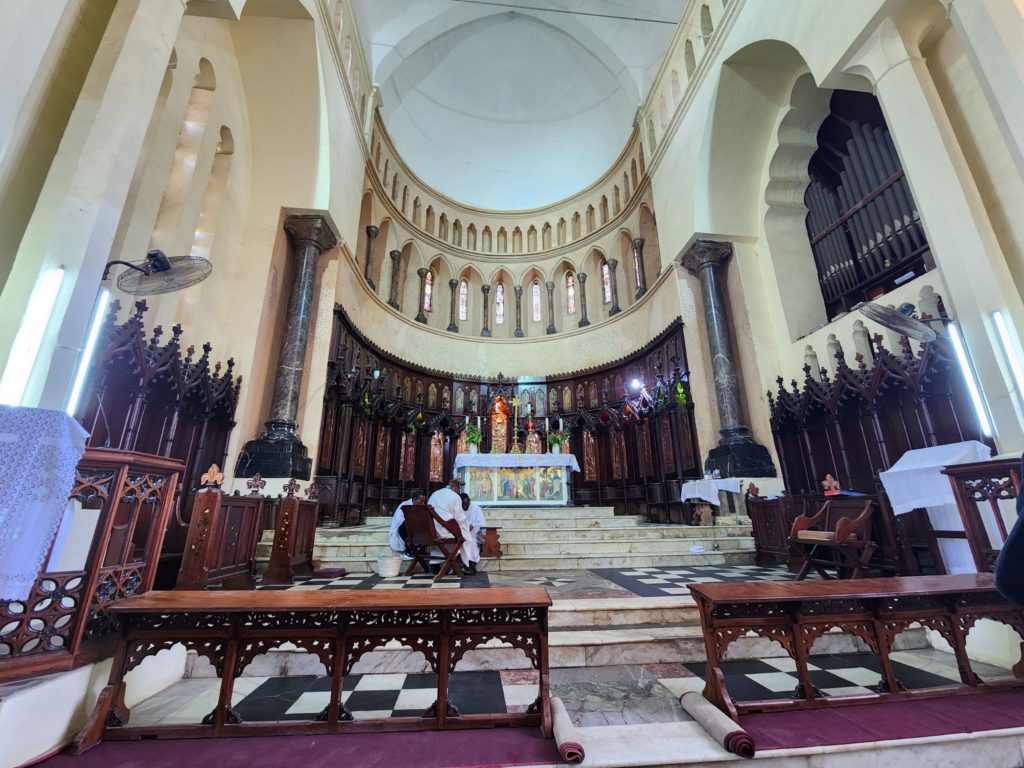
At the end of the tour, the guide brought us to a gallery that explained the history of enslaved people in Zanzibar more thoroughly. He left us to read at our own pace.
Visiting this museum is one of my top things to do in Stone Town. It is highly educational and inexpensive.
Visit the Freddie Mercury Museum

For a lighter museum visit, I also recommend visiting the Freddie Mercury Museum in the heart of Stone Town. Freddie Mercury was the lead singer of the popular band Queen and was born and raised in Zanzibar. As a testament to his legacy, there is now a museum in his old home.
I’ve been a big fan of the band Queen ever since I can remember. As a pre-teen, I even considered them my favorite band. Of course I had to visit this museum.
The museum details his life and legacy, and the legacy of Queen in general. It talks about how he grew up in Stone Town, with pictures from his childhood adorning the walls. One section features comments from people who knew him as a kid/young adult and during his rise to superstardom.
As you go through the museum, you learn more about his history as Queen rose to fame, and some of their most prominent shows and outfits. My favorite part of the museum was the collection of hand-written lyrics by Freddie.
Tour the Old Fort
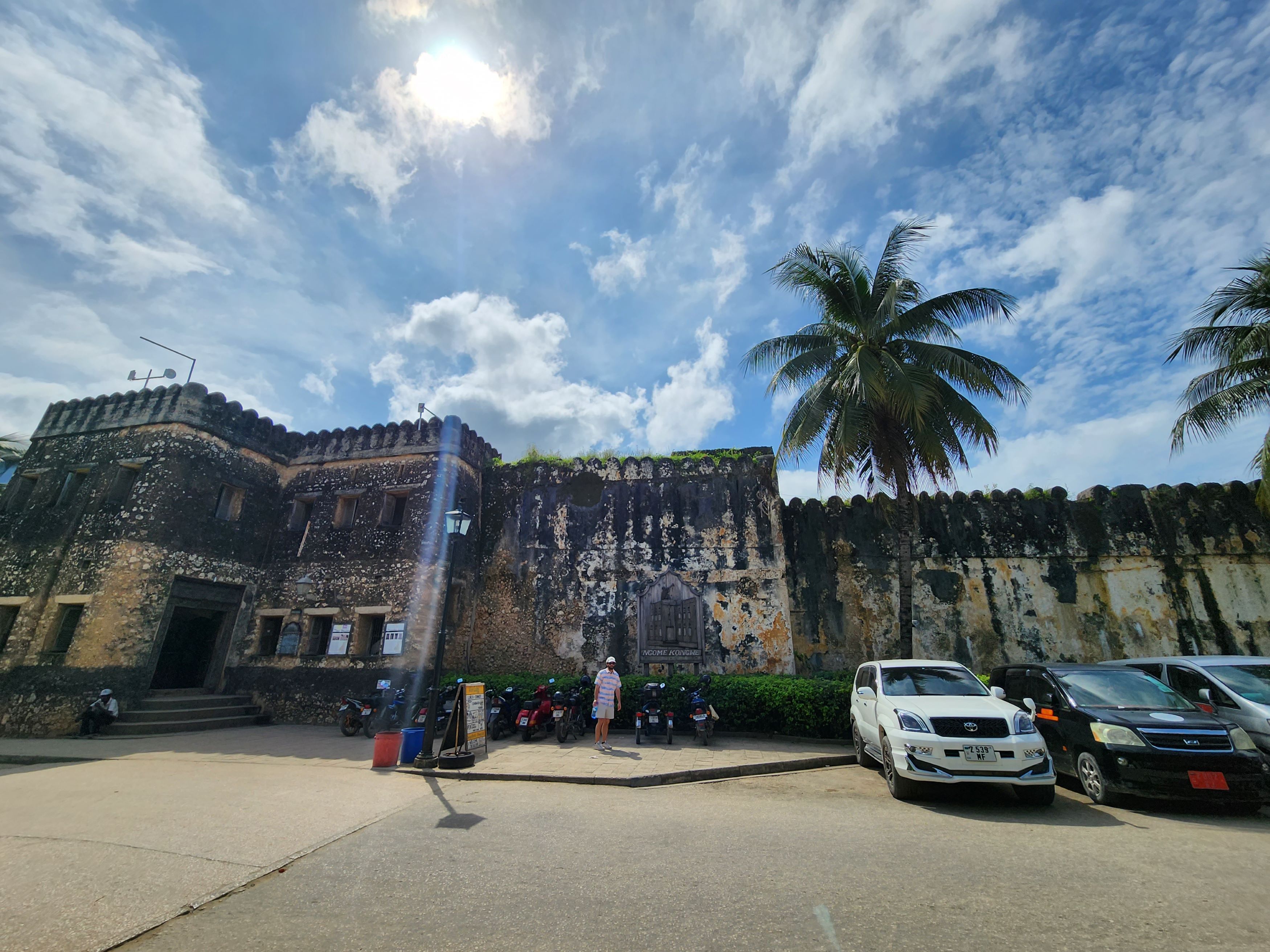
Also known as the Arab Fort, the Old Fort is a large stone fortification near the waterfront in Stone Town. Omani people built the fort after expelling the Portuguese rulers from Zanzibar. Some say it’s the oldest building on the island.
Throughout history, the fort has served many purposes: Prison, barracks, amphitheater. Today, it is one of the main things to do in Stone Town. You can explore the grounds of the fort on your own or with a guide. I opted to explore on my own this time. There are also stalls with vendors selling paintings and souvenirs throughout the fort area.
The fort is free to enter, but you may give a donation. It is an interesting piece of Zanzibar history, and a good place to spend 30 minutes to an hour exploring.
Stroll the Waterfront
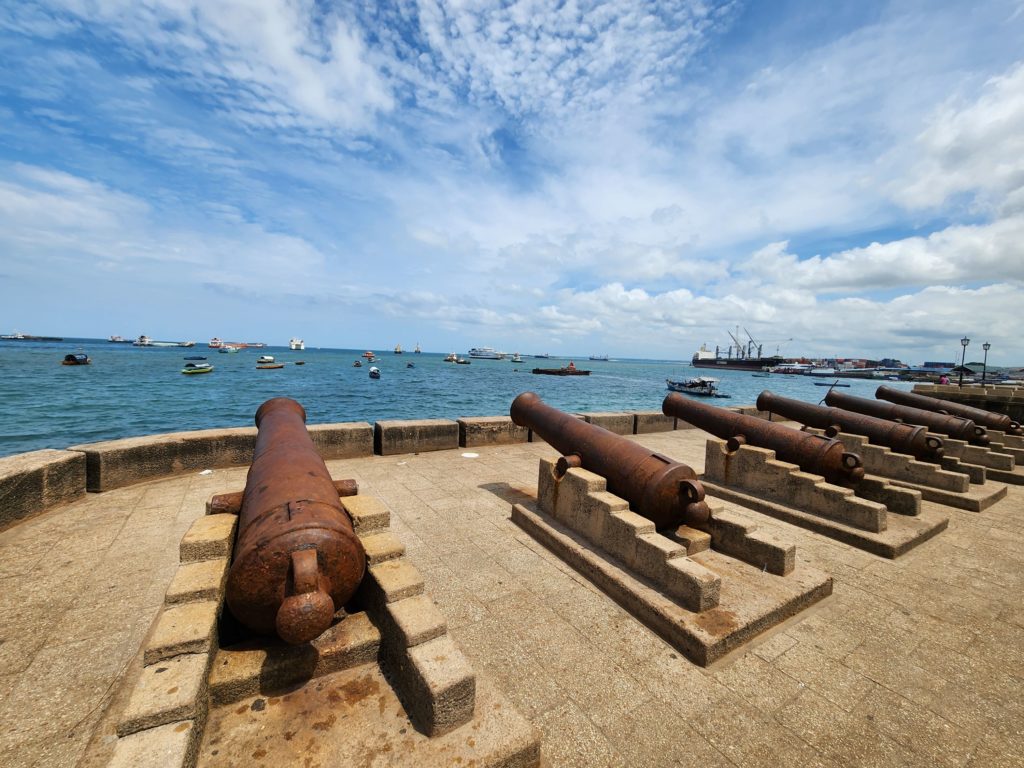
While the best beaches for swimming and relaxing on Zanzibar are on the north and east coasts of the island, Stone Town still has a gorgeous waterfront. There is a promenade that extends from the edge of Forodhani Gardens to the ferry dock. You can take a nice walk along the water along this promenade.
You can start at the cannons overlooking the water that hearken back to a time when Zanzibar had to be wary of attacks and invasions and the changing hands of control. Then, walk the promenade lined with palm trees on one side and that beautiful turquoise water on the other. At high tide, kids of all ages will practice jumping off the promenade and into the water. You can also watch other families playing in the shallow water on the small beach in this area.
One note, you will get a lot of people coming up to sell you things as you walk along the waterfront. They are mainly trying to sell you tours and day trips to places like Prison Island. A lot of people will claim to have their own boat, good price, etc. If you don’t want to take a tour with one of these sellers, the best way to get them to go away is to say you already did the tour.
Relax in Forodhani Gardens
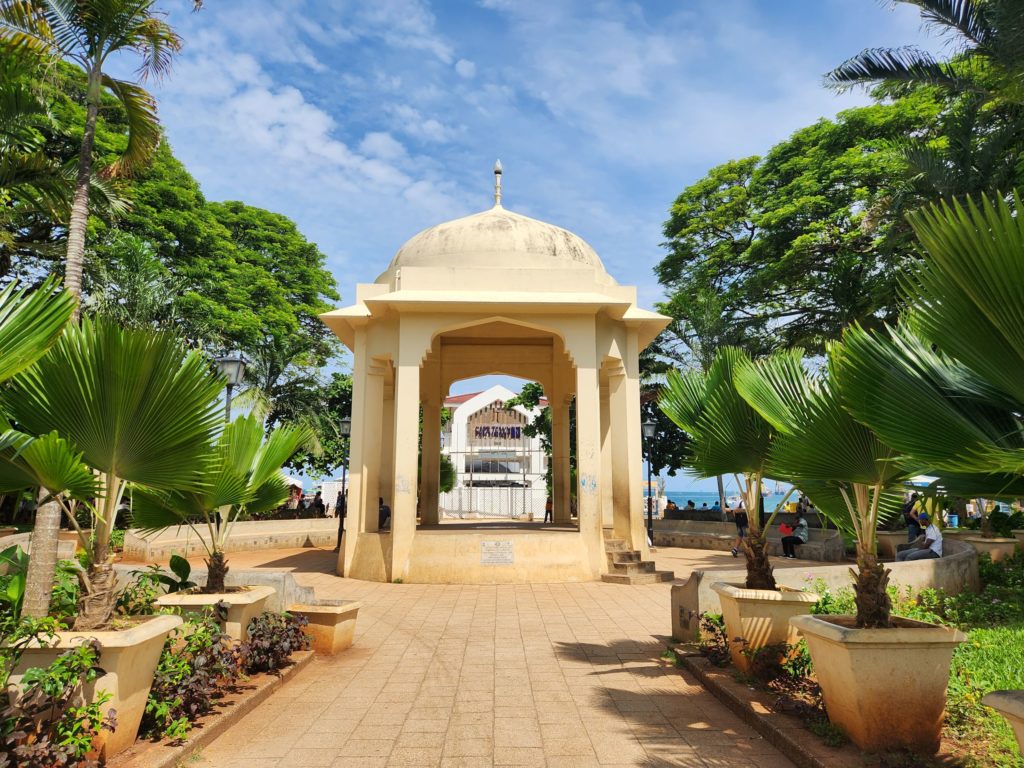
Forodhani Gardens is the park at the edge of the waterfront and a nice little place to relax and get some reprieve from the heat of the day. There is a nice fountain and a structure with shade where quite a lot of people seem to enjoy relaxing. While it’s not much of a garden in the way of plants, it is a nice little park to stroll around and relax on benches.
This park has nice benches under the shade of the trees where you can relax, hydrate and pet some cats for several minutes. Only once did we have someone approach us to sell us something.
In the Forodhani Gardens, there are also some coffee shops, restaurants and bars where you can buy some food and drinks, as well as some pop up shops selling different souvenirs.
Eat at the Night Market
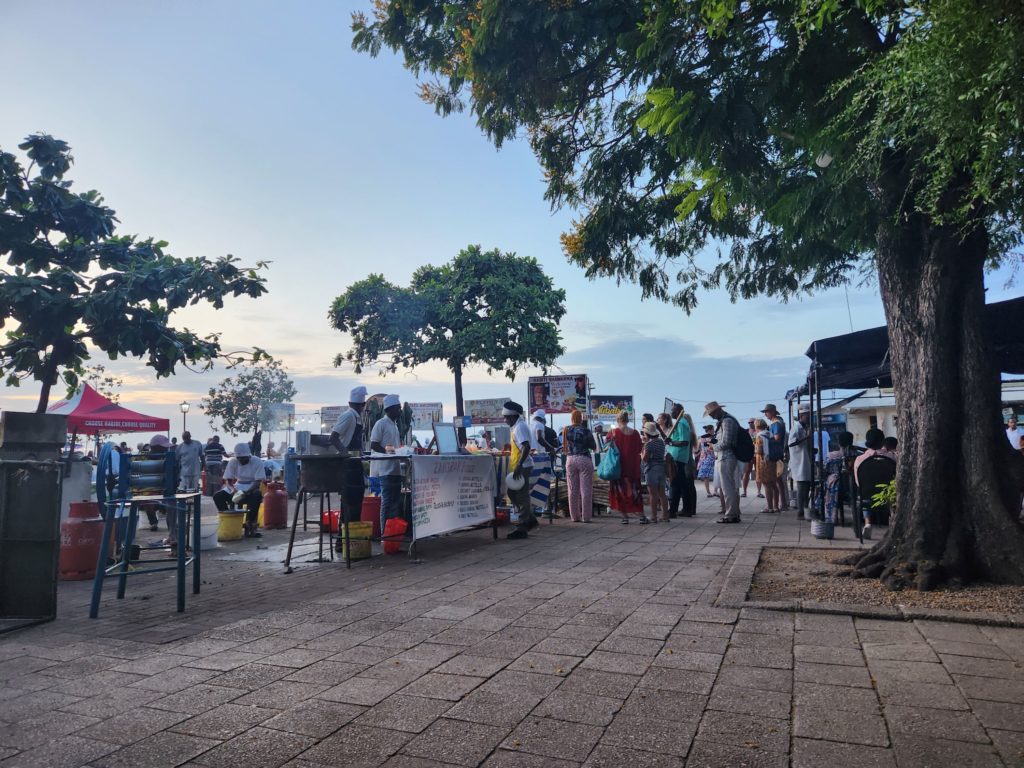
At night, Forodhani Gardens transforms into a large night market that attracts locals and tourists alike with the promise of delicious and authentic local Zanzibar food. I highly recommend spending at least one evening at this night market if you enjoy tasty local food at affordable prices.
Thanks to recommendations from fellow travel blogger “That Travel” and the helpful hostel receptionist, I arrived at the night market armed with a short list of foods to try. I avoided the many, many tables of seafood skewers. Not only were they not on the list, but I’d read vendors mark them up quite a bit for tourists.
I stayed focused on the recommendations:
- Urojo: A thick soup made of tamarind and mango and filled with things like chickpea fritters, boiled potatoes and choices of meat and vegetables. This soup was so interesting! The broth had a tangy, slightly sour taste and good touch of spice. And the fillings were perfect inside of it.
- Zanzibar Pizza: More of a quesadilla and less of pizza, this is a staple of Stone Town cuisine. It’s a dough with mayo, soft white cheese, eggs, vegetables and ground meat. The chef folds the pizza, fries it on a grill and serves it cut into nine pieces with a spicy sauce on the side. I was incredibly skeptical of this dish, but once I tried it, I loved it. I don’t usually even like cheese or mayo, but the flavors of the meat and vegetables disguised them well. If you go to the market, find the man with the sign saying Anthony Bourdain visited him. You won’t be disappointed.
- Sugarcane Juice with Lime: After trying some sugarcane juice in Vietnam and tossing it because it was too sweet, I was also skeptical of trying it again at the night market. However, the vendor offered me a taste beforehand, and I liked it enough to order a full cup. The vendors here make it by mixing it with lime juice in a container with a giant ice block. It went quite well with the Zanzibar pizza.
If you visit the night market, make sure to try at least these three items. There is also dessert Zanzibar pizza if you have a sweet tooth. Be aware that the market is quite crowded, especially on weekends. Be wary of hopeful pickpockets. There are also going to be children begging for food.
Browse the Darajani Souk
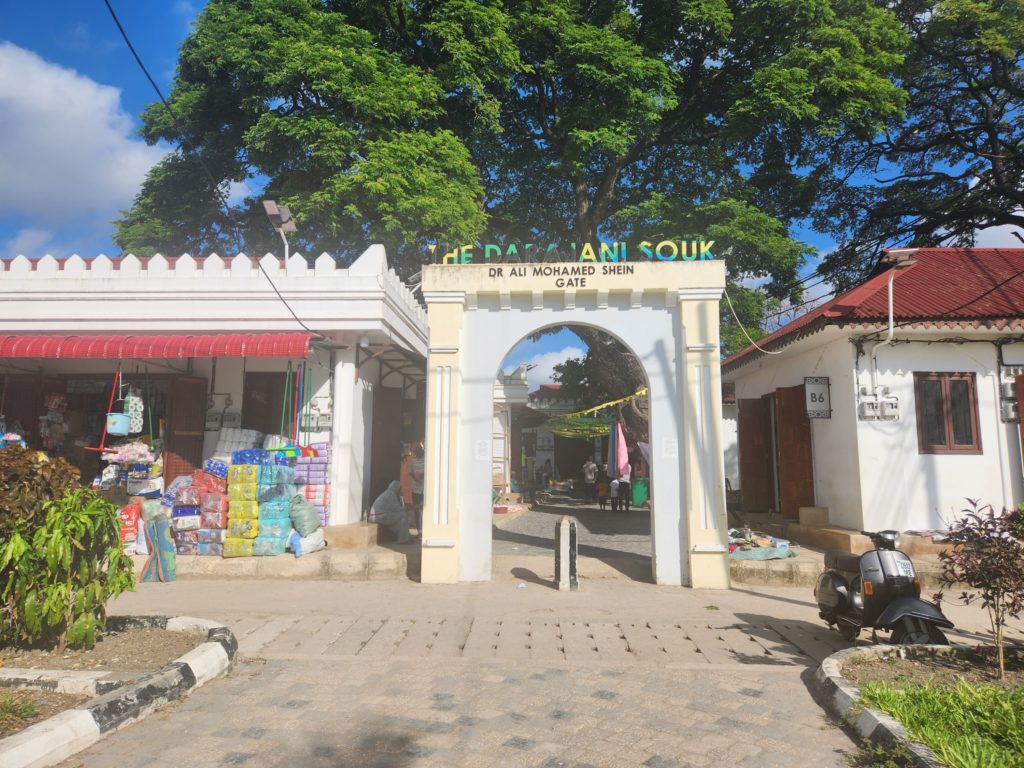
Darajani Souk is one of the central markets in Stone Town, and a very popular shopping center for locals and tourists alike. You can buy anything you need, from all types of foods to spices to household goods. You can come during the day and browse the stalls, do some souvenir shopping or eat some local food.
If you’re an obvious tourist, you’ll also face vendors trying to push their wares on you – especially spices. Zanzibar is known as the “Spice Island” and vendors will try to sell you spices for a substantial markup. Telling them no thank you and that you already have spices will usually get them to leave you alone.
Wander through the Alleyways
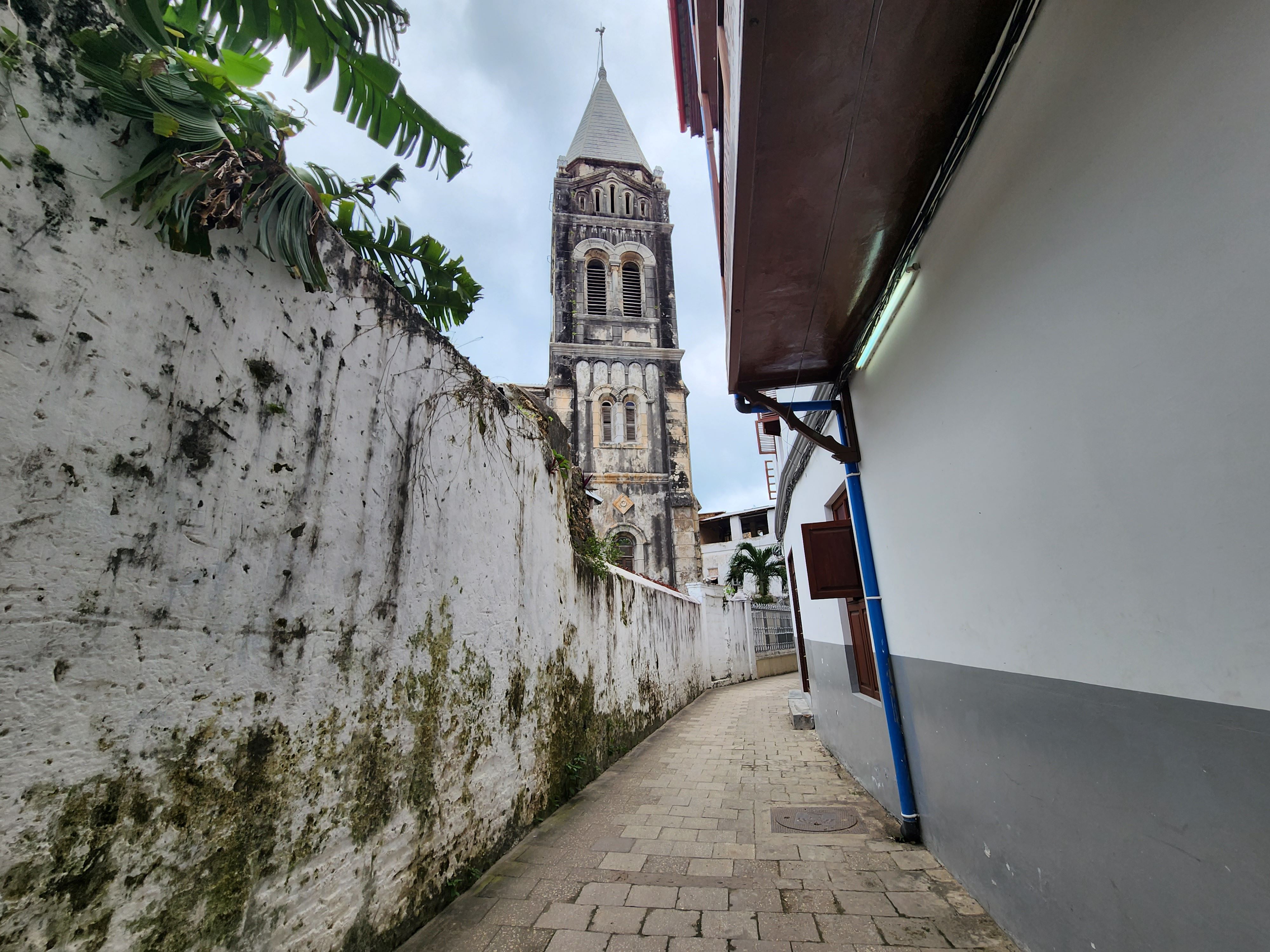
Stone Town is made up of winding alleyways with several nooks and crannies. Although Stone Town itself is rather small, it’s easy to get lost among these alleys.
Thankfully, Stone Town is generally quite safe for tourists. The most hassle you’re likely to face will be from a vendor you happen to pass trying to sell you something. But taking time to just meander through the alleyways is a great way to appreciate the architecture and the age and history of the city. In fact, Stone Town is a UNESCO World Heritage. After spending a few hours in the alleys, you’ll understand why.
Admire the Carved Wooden Doors
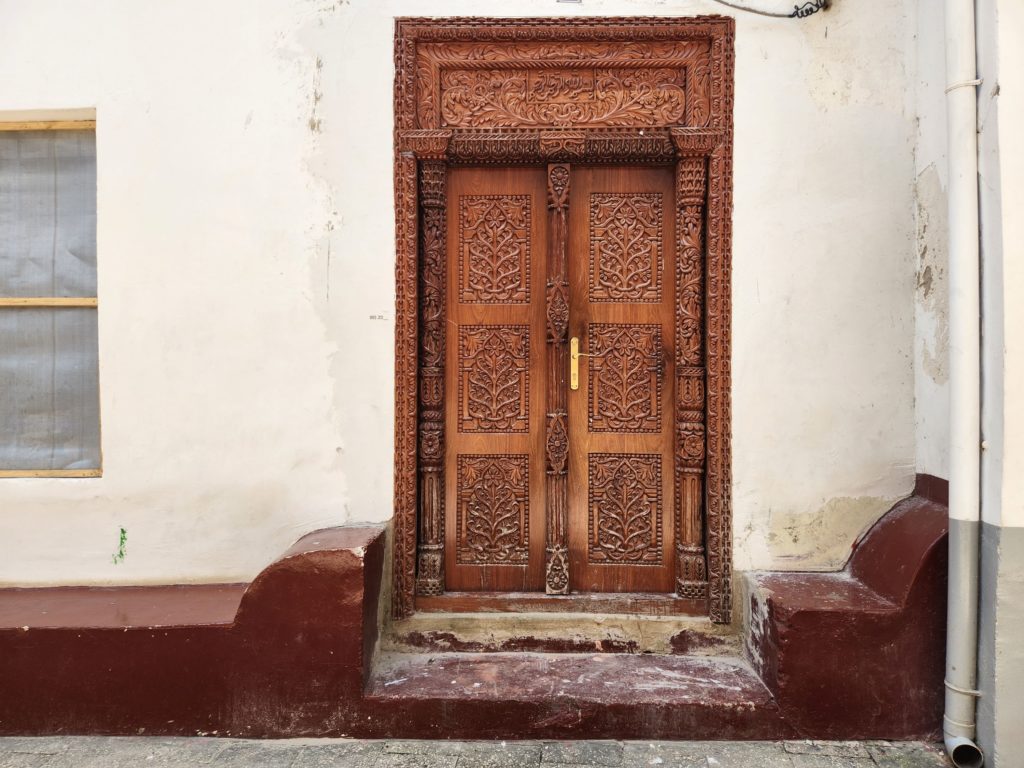
This recommendation may sound odd, but Stone Town is known for its intricately carved wooden doors. These doors are perhaps the best place to see tangible evidence of the blend of African and Asian culture and art. These different cultures strongly influenced the doors’ styles and materials.
There are Indian-style Gujarati doors characterized by the large brass studs meant to deter elephants in Indian (though there are no elephants in Zanzibar). Swahili-style doors are carved with elements from nature and other symbolism. For example, the locks symbolize security. Arabic-style doors have intricate patterns and Arabic script adorning them.
The doors originally symbolized status, wealth and religion historically. Today, they stand as a testament to the deep and unique history and culture of Zanzibar.
Observe Jaws Corner
Jaws Corner is a local spot in the center of Stone Town where local men meet for coffee and conversation. You can recognize it by a wall with a large mural of a great white shark and sign saying “Jaws Corner.” At any time of day, you can pass by to see men engaging in long conversations, playing chess and watching sports.
From what I understand, Jaws corner is meant to be a men-only zone, so I only passed by it to get a look. However, if you’re a man, you may be welcome to sit down and engage with locals.
View the House of Wonders
The House of Wonders, originally built to be the Omani Sultan’s palace, housed a museum dedicated to Swahili and Zanzibar history and culture. It is on the edge of Forodhani Gardens, overlooking the waterfront.
Unfortunately, the House of Wonders was closed due to disrepair/renovations when we visited. I think it’s been in need of renovations for multiple years, so it’s unclear if/when tourists will be able to visit again. However, it is worth seeing the palace from the outside.
Enjoy Spice Coffee
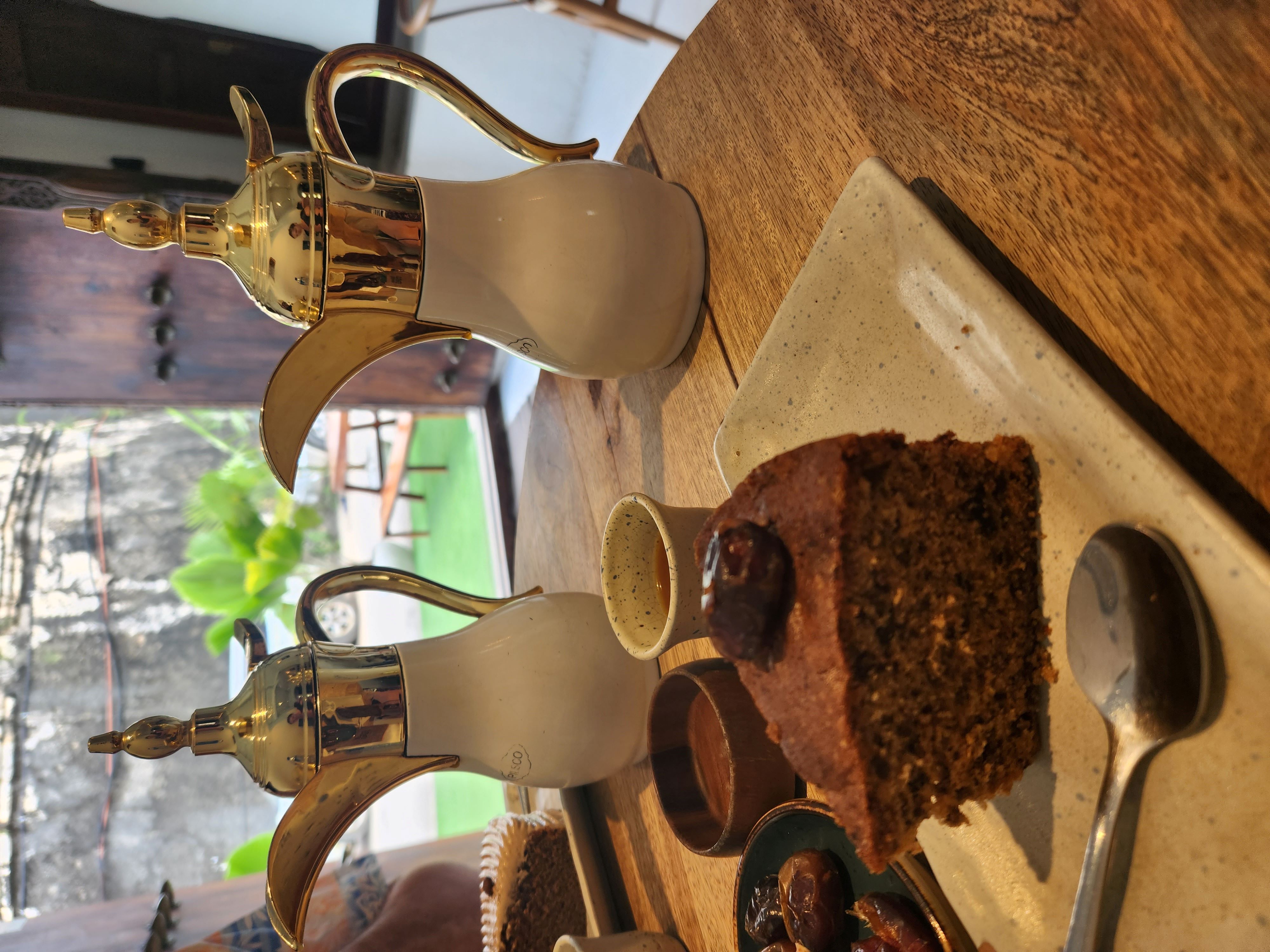
Another influence from the Middle East, spice coffee is a popular warm Stone Town beverage. It is coffee mixed with spices and available in certain coffee shops. I had a harder time finding this coffee than I anticipated, but I ended up in a lovely shop with Arabic coffee, which I believe is similar. I enjoyed my coffee with a date cake, which was perfect.
Things to do in Stone Town if you have more time:
There are plenty of other things to do in Stone Town if you’re visiting for more than two days. Most of these suggestions are excursions outside the city.
- Spice Farm Tour: Touring a spice farm is one of the top recommendations to do in Zanzibar. I chose to spend a second day exploring the town rather than going on a spice farm tour, but I’ve heard great things from people who have visited them.
- Safari Blue Tour: This snorkeling excursion promises to take visitors to the best snorkeling spots around the island and enjoy lunch on a sandbar. Not doing a Safari Blue excursion is probably my biggest regret!
- Explore other parts of the island: If you’re only planning to stay in Stone Town during your visit to Zanzibar, I definitely recommend making your way to the other side of the island. This is where you can find the best beaches or eat at Zanzibar’s premium restaurant, the Rock.

Another option is visiting Prison Island by boat to see the giant tortoises. However, I was warned away from doing this activity by the hostel receptionist as he said it wasn’t worth the cost.
Logistics:
Those are my recommended things to do in Stone Town over two days. If you’re interested in visiting, here are some logistics to keep in mind.
Stone Town Safety:
You’re probably wondering if Stone Town is safe to visit, and the good news is yes! Zanzibar is considered very safe, and you can even walk around at night. You want to take normal tourist precautions like ensuring you don’t keep your wallet in your front pocket in crowded places like the night market. It can obviously be a little uncomfortable with people trying to sell you things all the time, but they’re not going to harm you.
Best Time of Year to Visit Stone Town:
The best time of year to visit Stone Town is during the dry season between June and October. This time of year is technically winter, which means the weather will be cooler. Plus, if you’re staying on a more southern part of the island, you’re out of seaweed season.
I visited in the off season in January, and it was nice to be among smaller crowds. The weather was still nice, with mostly sunny skies and warm ocean water. But it was definitely hot.
Getting to Stone Town:
There are two main options for reaching Stone Town from mainland Tanzania:
- Flight: There are daily flights to Zanzibar from the mainland. If you’re planning to fly from Kilimanjaro Airport, know there are only two direct flights per day – early in the morning and late at night. Otherwise, you’ll be stopping in Dar es Salaam.
- Ferry from Dar es Salaam: There are regular ferries to Zanzibar from Dar es Salaam, but people report that the ride is rough through choppy water. I read it’s a bad idea if you’re easily seasick, so I flew.
Accommodations:
I most often stay at Airbnbs when I travel, but accommodations for Airbnbs and hotels were quite pricey in Stone Town. The cost honestly surprised me because the Airbnbs near the beaches on the other side of the island were quite affordable.
I opted to stay in a private room in the hostel, Stone Town House, which was affordable and nice. I had a private bedroom and en suite bathroom and air conditioning. Reception allowed late check out, and even offered us the option to shower in the shared bathroom before our flight if we chose.
Getting Around:
There are three main ways you can get around Zanzibar & Stone Town:
- Taxi: There are taxis that can help take you all around the island, but be aware that they are relatively expensive. I recommend trying to secure a taxi ahead of time if you’re looking to take one from the airport as it can be cheaper for your accommodations to hire one for you. When we arrived, there were people standing outside trying to find ways to split rides and save on costs.
- Local bus: Also called dala dala, these local, privately-owned mini buses take passengers around the island. There is no set schedule – rather they leave when they are full. So it’s best only to take them if you’re flexible on time and possibly route.
- Walking: Stone Town is incredibly walkable, so you shouldn’t need much in the way of transportation when you’re actually in the town.
If you book any tours on the island, the organizers will often offer pickup. Know that the roads across the island generally aren’t very good, so it takes awhile to travel longer distances even if they don’t look too far on the map.
I hope this list of things to do in Stone Town inspired you to visit! Pin this to save for later.
